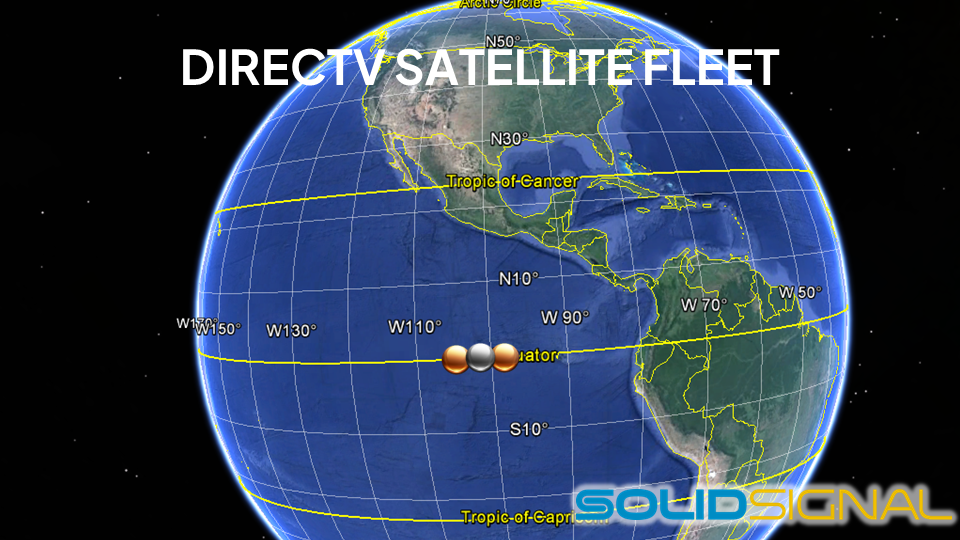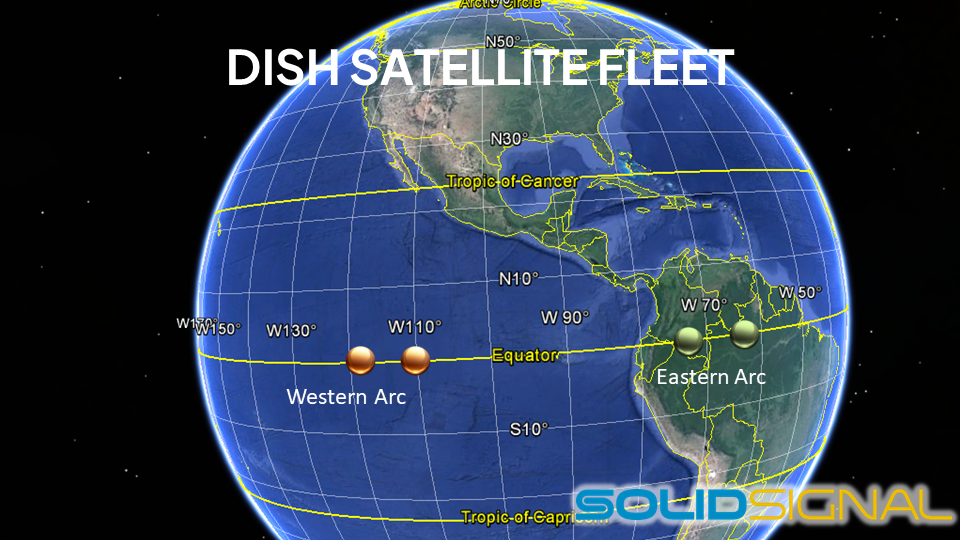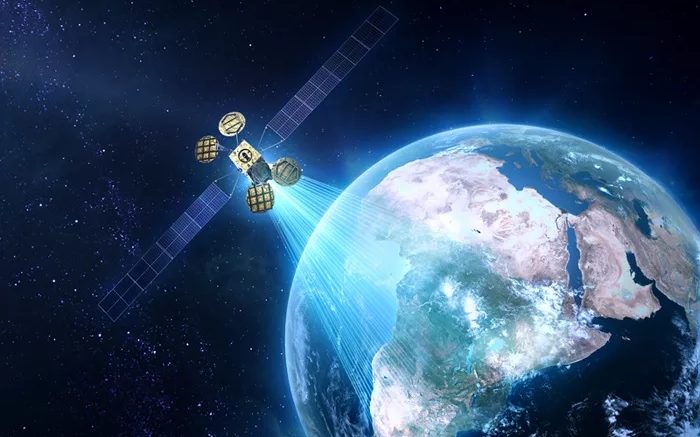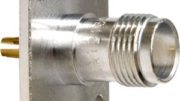If you’re a DISH customer who’s moved from one place to another, you might have heard the term “Western Arc” and “Eastern Arc.” DISH has two complete satellite fleets and there is quite a bit of overlap in them. Both have all the national channels and there are even local channels that are on both actually as well. This would seem a little wasteful. Let’s take a look at how the two US providers handle their satellite fleets and why you would choose one or the other.
First, a little bit about satellite orbits.
All communication satellites orbit the earth at about 22,000 miles. above the equator. They use a trick called “geostationary orbit.” I wrote a whole lot about this a while back, but to put it simply, stuff orbits the earth faster or slower depending on how close it is. There’s a “sweet spot” where a satellite goes around the earth in exactly one day. Since the earth is spinning at once a day too, it seems like the satellite is just parked in space above a specific spot. All communications satellites sit up above the equator and their orbital slots are described by what longitude they are positioned. We generally don’t use decimal points when we talk about satellites in typical conversation.
DIRECTV’s satellite fleet

DIRECTV has three primary satellite locations, at 99, 101, and 103 degrees. There are several other other satellite locations which are no longer used. There’s one at 110, which was used for Puerto Rico, 95 which was used for Latin America as well as US international stuff, and there used to be a satellite at the 72.5 degree location, which you can see all the way to the right. There is also a satellite at 119 degrees which is not shown. That satellite provides standard definition locals to a small number of cities and expected to be taken out of service as soon as all broadcasts from it are stopped.
The main three satellites are positioned so they’re even with the middle of the US. Even though they’re down over the equator, that means they are perfectly positioned to cover the entire continental US without too much trouble.
DISH’s satellite fleet

DISH has two satellite fleets. One sits out near the west coast of the US and one is essentially over South America. These two fleets together give strong coverage over all of the US. You can see that in the big picture, DISH doesn’t have more satellite locations, they just break them up differently. DISH operates satellites at 61.5 and 72 degrees, which they call the Eastern Arc. They also operate satellites at 110 and 119 degrees referred to as the Western Arc. Additional satellites at 77 and 129 degrees have been retired.
So which is better?
DIRECTV took the step of licensing a lot of satellite space in the middle of the country. At the same time they bought pretty much every possible satellite broadcast license in the “Ka” band which is 26.5-40GHz. This means they have almost unlimited channel capacity if they want it. It also means their satellites cover pretty much everywhere they want to broadcast.
DIRECTV launched their own satellites for the most part where DISH operates some of their own satellites and leases space on others. The fact that they were a little more frugal instead of throwing a lot of money at the problem meant they were locked out of that 99-101-103 slot where DIRECTV is, but on the other hand they still cover the whole USA quite easily with the satellites they have.
Looking at the benefits
I will tell you that aiming a DIRECTV satellite is easier if you’re just going for the main three satellites. You almost don’t need to set the tilt because the satellites are so close to each other. The fact that the satellites are close means that they’ll also tolerate a bad aiming job better.
On the other hand, DISH’s fleets do a better job of covering the oceans and international waters just off the US coast. Many a cruise ship uses DISH satellite because you can just receive it better when you’re offshore.
But in the end does it matter?
Satellite snobs in the 2000s would argue saying one provider was better or worse in this regard. DIRECTV’s unlimited capacity and single fleet was good they’d say, but then the Ka-band satellites suffer from a bit more rain fade if the dish isn’t aimed perfectly. DISH is harder to aim in general but more tolerant of rain fade.
In the end though it really doesn’t matter. Both companies have satellite footprints that cover everyone. Both companies manufacture different kinds of dishes anyway, it’s not like having western or eastern arc costing them more. Yes DISH has some duplicate channels but they also have lower operating costs per satellite since they don’t own all of them.
Truth is, it’s a wash. You win either way. Oh, and if you want to shop for DIRECTV or DISH hardware, check out Solid Signal, or call us at 888-233-7563.





